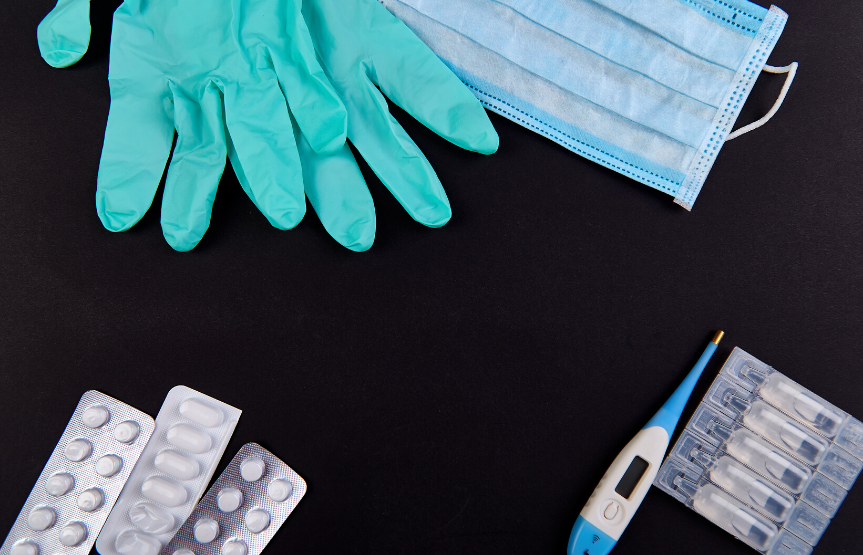Overview of COVID-19, symptoms, diagnosis and treatment

A cluster of unidentified cases of pneumonia has been recorded in Wuhan, China in late December 2019 and a few days later, it established the causative agent of the enigmatic pneumonia as a novel coronavirus. The causative infection is briefly referred to as extreme acute respiratory syndrome Coronavirus 2 and the resulting infectious illness is referred to as Coronavirus disease 2019 or COVID-19. The COVID-19 outbreak has spread across China and around the world, infecting more than 2.5 million people and killing almost 171,796 of the infected ones. COVID-19 epidemic has become a global health threat, keeping people all over the world self-isolating for almost 2 months.
Coronaviruses are a category of extremely complex, enveloped, positive-sense and single stranded RNA viruses. There are several common and distinct elements of physiology and pathogenesis of these CoVs that cause multiple diseases affecting enteric, neurological and hepatic processes of differing intensity in humans and animals. The pathogen that causes the disease is a nCoV that was identified firstly in the late January 2020 named SARS-CoV-2 [1]. It is a novel member of CoVs that has distinct genetic features that are compatible with with the CoV family but have distinct gene sequences that vary from previously sequenced CoVs.
CoV is essential for the envelope spike (S) protein. The s protein mediates receptor attachment and membrane fusion, which is crucial for the determination of host tropism and the ability of transmittion. In fact, the S protein is functionally divided into the S1 domain, responsible for receptor binding and the S2 domain, responsible for the fusion of the cell membrane. The analysis of the structure reveal that the receptor-binding domain was comprised of a central and an external subdomain. Angiotensin-converting enzyme 2 (ACE2) was identified as SARS-CoV cell receptor. Biophysical and structural research revealed that SARS-CoV-2 protein S links to ACE2 to about 10-20 times the affinity of SARS-CoV protein S which are almost similar to each other. The higher the affinity of S protein to human ACE2 can encourage the spread of SARS-CoV-2 to human population. in the meantime, SARS-CoV-2 does not use CoV receptors such as Aminopeptidase N and Dipeptidyl peptidase 4 to enter cells.

Figure1. Schematic model of SARS‐CoV‐2 life cycle. S protein binds to the cellular receptor ACE2 to facilitate the entry of the virus.
Most patients were between the ages of 30 and 79, the age mean is between 49 and 59 and the least cases were in children under the age of 15. The patients were over half male. Most of the patients had at least one coexisting medical condition such as; hypertension, diabetes or cardiovascular disease, which increased their risk of case-fatality.
The spectrum of COVID-19 clinical presentation ranging from asymptomatic infection to sever respiratory failure has been reported. The main symptom are self-reported fatigue, fever, dry cough, myalgia and dyspnea. The rare symptoms include production of sputum, headache, hemoptysis and diarrhea. Although pneumonia occurs in most patients infected with coronavirus, few cases have been complicated and have complained pleuritic chest pain.
Eventhough a good contact history, clinical signs and pneumonia radiographic changes make the diagnosis likely, the diagnosis from the laboratory is more accurate. Real-time polymerase chain reaction (RT-PCR) is commonly used to identify causative viruses from respiratory secretions. This method acted as the main clinical laboratoric diagnostic tool for COVID-19 testing. The success of these tests are of a great importance in order to understand the kinetics of the virus and the tissue tropism found in COVID-19 patients. Several unique and sensitive assays targeting the genes of the SARS-CoV-2 such as RdRP, N and E genes were designed to detect viral RNA in clinical specimens. Lower respiratory tract samples provide the higher loads of the virus. The positive rate of RT-PCR for the samples taken from the throat were stated to be around 60% in the early stages of COVID-19. Also, another method to detect the presence of COVID-19 is chest computed tomography (CT), which has resulted in most cases more reliable and accurate due to its high sensitive modality to SARS-Cov-2 infection.
Firstly, COVID-19 infected patients are treated in single rooms with symptomatic treatment and drugs such as; oseltamivir, ribavirin, lopinavir and other to reduce viral load and prevent the possible complications of the respiratory tract. The antibiotics used usually covered some common and some atypical pathogens. However, when the secondary infection occurred, the medication given was based into the results of bacterial culture and the sensitivity of the drugs. Remdesivir was reported to have an effective result in the patients infected with COVID-19, that made scientists analyze the safety and efficacy of hydroxychloroquine for the treatment of adults. This drug is used to treat malaria and rheumatoid conditions like arthritis, but it has demonstrated antiviral activity, an ability to modify immune system and its activity. However, this medication has its own risks even used in short term including ; cardiac arythmias, hypoglycemia, seizures and dermatological reactions [2].
SARS-CoV-2 pandemic has become a global concern. At the moment there is no vaccine or specific treatment for COVID-19 and the best strategy is to deal with t by controlling the infection souces, protecting this way people and cutting off its transmission. Future research will focus on improving the accuracy on diagnosing COVID-19 in early stage, developing a vaccine and identifying effective medication. Consequently, it is important to clarify the pathogenesis of SARS-CoV-2 infection to accomplish these goals.
References
- He, F., Deng, Y. and Li, W. (2020). Coronavirus Disease 2019 (COVID-19): What we know? Journal of Medical Virology. [online] Available at: https://www.ncbi.nlm.nih.gov/pubmed/32170865
- National Institutes of Health (NIH). (2020). NIH clinical trial of hydroxychloroquine, a potential therapy for COVID-19, begins. [online] Available at: https://www.nih.gov/news-events/news-releases/nih-clinical-trial-hydroxychloroquine-potential-therapy-covid-19-begins
